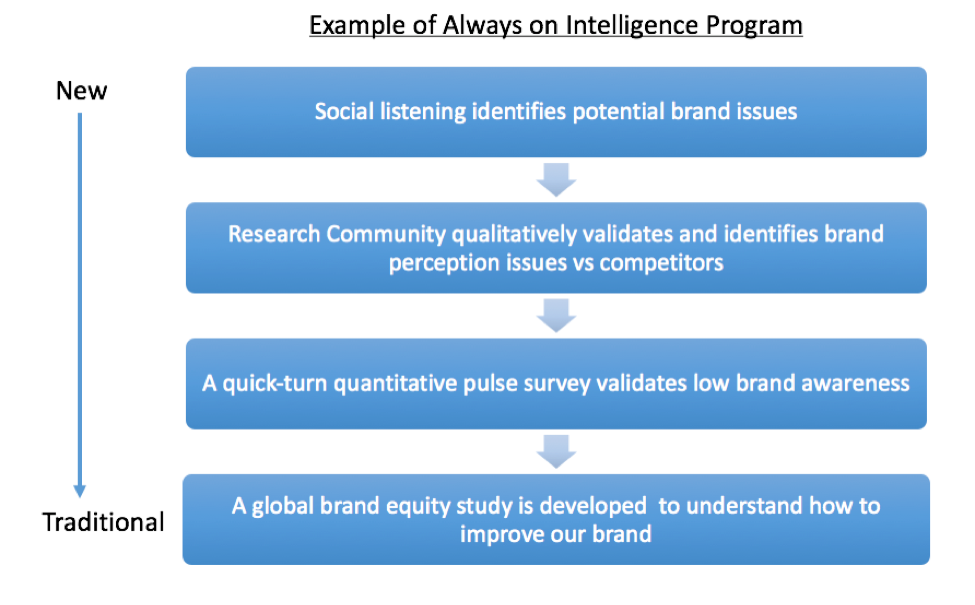Editor’s note: Tyler Kettle is research team lead, market development and insights, cloud platforms and infrastructure at technology company IBM, New York.
Marketing research is going through a significant transformation, one being driven by the increasing use of DIY research solutions in corporations and the growing ability to easily leverage social listening to provide faster and cheaper insights.
Transformation for some can be frightening as they may equate it with focusing only on the new and disregarding the old. For me, transformation means being able to embrace new methods, while still respecting and utilizing traditional approaches.
The need to transform how we conduct marketing research has become critical as increasing numbers of marketing professionals and senior management view research as optional due to long timelines and growing expenses. This has led to decision-making with little to no client/customer feedback.
To combat this growing trend, I realized I had to find a way to make research more accessible and get people excited about how marketing research can improve business decisions. The logical conclusion was to embrace new methods like online research communities that can help support decisions by reducing much of the risk for those decisions that are not already informed by market place insights.
The approach
Our research team has effectively moved from being a bakery that only sells very expensive and time-consuming wedding cakes to one that offers more affordable and easy-to-bake cupcakes. This allows us to tailor each cupcake to what a given customer wants at a given point in time. Equally as important, this model starts to get our stakeholders excited to buy our wedding cakes when the need arises for a large-scale initiative.
This change in our focus has led to the development of what our marketing research team calls an always-on intelligence program. This program allows for new techniques such as social listening, online marketing research communities and pre-paid rapid-fire surveys to build on each other and create the need for deep-dive studies that include traditional methods. These methodologies not only meet the needs of our stakeholders faster but also allow us to provision strategic studies like segmentation, brand equity and discrete choice when appropriate.

By embracing the new and continuing to leverage traditional research, I have seen significant increases in the use of marketing research. We are not only engaging more stakeholders by answering their questions but we are also increasing the usage of traditional approaches because our stakeholders are seeing the value that marketing research can bring.
Leveraging new and traditional approaches
Many view the goal of marketing research as one that can help reduce risk and facilitate better-informed decisions. That said, reducing risk doesn’t always have to be with over 95 percent certainty, especially if the alternative is decision-making at the roll of the dice. Research should help support a myriad of decisions by leveraging a variety of both new and historical approaches. However, we should exercise caution while embarking on this transformation as embracing these new methods has its downsides.
Researchers need to make sure that new techniques are not being overused to answer every question. A DIY solution can help to reduce the risk of an uninformed decision or increase risk if the solution is inappropriately applied.
Poor question design or an inappropriate target audience can lead to poor decision-making with these new DIY methods. Corporate researchers need to apply the right method and use sound judgment when interpreting results, especially for broader, more strategic decisions where traditional research protocols are required.
Ready to adapt
There is a paradigm shift underway in marketing research and we all need to be ready to adapt. It will be up to corporate researchers and the research firms we partner with to help us better understand how to make the most of this transformation and ensure that we are here to support our organizations by continuing to reduce risk and inform better decisions.
